Viejita - Apistogramma viejita
Scientific name: Apistogramma viejita
Common name: Viejita
Family: Cichlidae
Usual size in fish tanks: 6 - 8 cm (2.36 - 3.15 inch)
014
Recommended pH range: 5.5 - 6.5
Recommended water hardness: 2 - 10°N (35.71 - 178.57ppm)
0°C 32°F30°C 86°F
Recommended temperature range: 25 - 28 °C (77 - 82.4°F)
The way how these fish reproduce: Spawning
Where the species comes from: South America
Temperament to its own species: peaceful
Temperament toward other fish species: peaceful
Usual place in the tank: Middle levels
Food and Feeding
The Viejita cichlid (Apistogramma viejita) thrives on a varied diet that includes both prepared and live foods. While high-quality flake or pellet food can serve as the staple of their diet, it's crucial to supplement this with more nutritious options to meet their protein needs. Regularly offer live or frozen foods such as brine shrimp, bloodworms, daphnia, and mosquito larvae. These protein-rich foods help maintain their health, enhance their natural coloration, and stimulate natural foraging behaviors.
It's also beneficial to occasionally provide vegetable matter in the form of blanched spinach or spirulina flakes, which help round out their diet and promote overall vitality. Feed them small amounts two to three times daily, ensuring that all food is consumed within a few minutes to prevent water contamination.
Origin
The Viejita cichlid is native to the slow-moving, shallow waters of South America, specifically in the Amazon River Basin. They are most commonly found in areas with soft, acidic water, rich in organic material and leaf litter. These environments provide them with ample hiding places and opportunities to hunt for small invertebrates. In the wild, Viejitas often inhabit shaded areas under overhanging vegetation, where the water is calm and filled with decomposing plant material, which further acidifies the water.
Sexing
Distinguishing between male and female Viejitas can be challenging when they are juveniles, as they look similar in size and coloration. As they mature, males become noticeably more colorful, often displaying bright reds, yellows, and blues, particularly around their head, fins, and body. Males also develop a more pronounced, elongated dorsal fin. Females tend to be smaller and have a more subdued, pale coloration, especially outside of the breeding season. During spawning, females' colors can become slightly more vibrant as they prepare to lay eggs.
Breeding
Apistogramma viejita are cave-spawning fish, and they require soft, slightly acidic water (pH 5.5 - 6.5) to breed successfully. Frequent small water changes and a slight drop in temperature can often encourage spawning. The ideal breeding setup includes small caves or crevices created with rocks, coconut shells, or upturned plant pots, where the female can lay her eggs.
Once the female lays approximately 40 eggs, she will guard the clutch within the cave, fanning the eggs to ensure proper oxygenation. Meanwhile, the male will defend the surrounding territory to prevent other fish from approaching. The eggs typically hatch within 3-5 days, and the fry become free-swimming after another 5-7 days. At this point, you can start feeding them with newly hatched brine shrimp or fine powdered fry food.
To increase the survival rate of the fry, it’s important to maintain low lighting and plenty of hiding places in the tank. The female will continue protecting the fry for several weeks, leading them to safer areas when threatened.
Lifespan
The typical lifespan of Apistogramma viejita is between 2 to 3 years in captivity. However, with optimal care, including stable water conditions, a nutrient-rich diet, and a stress-free environment, some individuals can live up to 4 years. Ensuring that the water is well-maintained, with regular water changes and proper filtration, will contribute to their longevity.
Tank Requirements
Viejitas require a well-planted tank with both open swimming areas and densely vegetated regions for hiding. Plants such as Amazon swords, Java moss, and Cryptocoryne are ideal for creating these secure zones. These cichlids feel most comfortable in a naturalistic setup that mimics their wild habitat, with soft, slightly acidic water and plenty of leaf litter or driftwood to soften the water further and provide more hiding spots.
Given their small size and peaceful temperament, Viejitas are suitable for community tanks, provided that they are housed with other non-aggressive species. However, they are best kept in a harem system, with one male and 3-4 females, to mimic their natural social structure and reduce stress. The minimum tank size should be around 60 liters (~16 gallons) for a small group, but a larger tank is preferable for long-term care and to accommodate their territorial behaviors during breeding.
Short Description
The Viejita cichlid (Apistogramma viejita) is a peaceful, visually captivating species from the Amazon River Basin in South America. Known for their vibrant colors, especially in males, Viejitas are highly sought after by aquarists. They are best kept in planted aquariums with soft, acidic water and thrive when kept in groups with a harem structure (one male to multiple females). These small, easy-to-care-for cichlids make an excellent addition to community tanks, adding both beauty and intrigue with their vibrant colors and dynamic behaviors.
Thanks to Jan Wirén for the picture.


 Thread-finned
Thread-finned 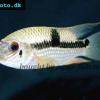 Acara
Acara  Yellow
Yellow  Patrick's
Patrick's  Blue
Blue  Green
Green 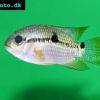 Acara
Acara  White
White  Compressed
Compressed 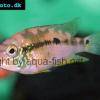 Pastel
Pastel  Midas
Midas  Red
Red  Bluemouth
Bluemouth  False
False 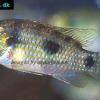 African
African  Agassiz's
Agassiz's  Banded
Banded 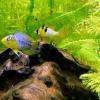 Yellow
Yellow  Cockatoo
Cockatoo  Blue
Blue  Blackstripe
Blackstripe  Highfin
Highfin  Redstripe
Redstripe  Threadfinned
Threadfinned  Macmaster’s
Macmaster’s 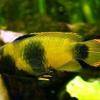 Panda
Panda  Norbert’s
Norbert’s 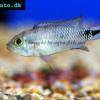 Blue
Blue  Thin-line
Thin-line  Three-striped
Three-striped 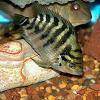 Flier
Flier  Archocentrus
Archocentrus  Convict
Convict  Seven
Seven  Spiny
Spiny  Oscar
Oscar  Sunshine
Sunshine  Chitande
Chitande  Firebird
Firebird  Midnight
Midnight  Lake
Lake  Sunshine
Sunshine  Aulonocara
Aulonocara  Nyasa
Nyasa 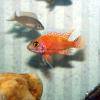 Ruby
Ruby  Grants
Grants  Aulonocranus
Aulonocranus  Chameleon
Chameleon  Benitochromis
Benitochromis  Orinoco
Orinoco  Yellow
Yellow 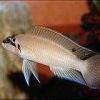 Brichard’s
Brichard’s  Guenther’s
Guenther’s  Southern
Southern  Cichla
Cichla 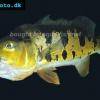 Peacock
Peacock  Chiseltooth
Chiseltooth  Bolivian
Bolivian  Red
Red  Many-pointed
Many-pointed  Jack
Jack  Red
Red  Three
Three 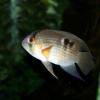 Keyhole
Keyhole  Azureus
Azureus  Red
Red  Jackson’s
Jackson’s  Crenicichla
Crenicichla  Honduran
Honduran  Blue-eye
Blue-eye  Afra
Afra 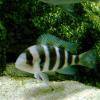 Frontosa
Frontosa  Slender
Slender  Malawi
Malawi  Chequerboard
Chequerboard  Checkerboard
Checkerboard  Malawi
Malawi  Ectodus
Ectodus  Tanganyika
Tanganyika  Canara
Canara  Green
Green  Rostratus
Rostratus  Pearl
Pearl 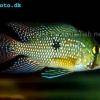 Geophagus
Geophagus  Yellowhump
Yellowhump  Suriname
Suriname  Redhump
Redhump  Red
Red  Dority’s
Dority’s  Argentine
Argentine 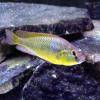 Burton’s
Burton’s  Victoria
Victoria 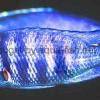 Haplochromis
Haplochromis  Jewel
Jewel  Banded
Banded 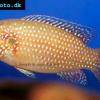 Lifalili
Lifalili  Lowland
Lowland  Texas
Texas  Pantano
Pantano  Severum
Severum  Banded
Banded 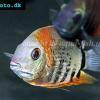 Severum
Severum  Rainbow
Rainbow  Parrot
Parrot  Chocolate
Chocolate  Brown
Brown  Marlieri
Marlieri  Golden
Golden  Striped
Striped  Masked
Masked 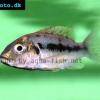 Konye
Konye  Blue
Blue  Trewavas
Trewavas  Electric
Electric  Dwarf
Dwarf  Redbreast
Redbreast  Lamprologus
Lamprologus  Gold
Gold 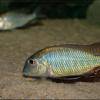 Greenface
Greenface 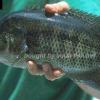 Mayan
Mayan  Aurora
Aurora  Blue
Blue  William’s
William’s 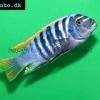 Zebra
Zebra  Malawi
Malawi  Blue
Blue 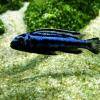 Blue
Blue  Mbuna
Mbuna  Parallel
Parallel  Purple
Purple  Flag
Flag  Bolivian
Bolivian  Ram
Ram  Basket
Basket 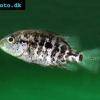 Haitian
Haitian  Zebra
Zebra  Striped
Striped  Neolamprologus
Neolamprologus  Brevis
Brevis  Fairy
Fairy 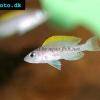 Neolamprologus
Neolamprologus  Cylindricus
Cylindricus  Hecq’s
Hecq’s  Neolamprologus
Neolamprologus  Lemon
Lemon  Mustax
Mustax  Daffodil
Daffodil  Six-bar
Six-bar  Five-bar
Five-bar  Marbled
Marbled 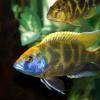 Giraffe
Giraffe  Blue
Blue  Sulphurhead
Sulphurhead  Wolf
Wolf  Jaguar
Jaguar  Blue
Blue  Marakeli
Marakeli  Madagascar
Madagascar  Pinstripe
Pinstripe  Pelmatochromis
Pelmatochromis  Kribensis
Kribensis 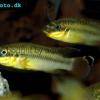 Striped
Striped  Red
Red  Deepwater
Deepwater  Fenestratus
Fenestratus  Nichols’
Nichols’  Southern
Southern  Bumble
Bumble  Demason’s
Demason’s  Slender
Slender  Red
Red  Mbuna
Mbuna  Malawi
Malawi  Kenyi
Kenyi  Powder
Powder  Altum
Altum  Angelfish
Angelfish  Angelfish
Angelfish 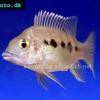 East
East  Juba
Juba  Earth
Earth 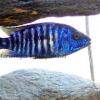 Electric
Electric  Azure
Azure  Lionhead
Lionhead  Discus
Discus  Blue
Blue  Red
Red  Zebra
Zebra  Brichard’s
Brichard’s  Blue
Blue  Firemouth
Firemouth  Zebra
Zebra  Yellow
Yellow  Blue
Blue  Dwarf
Dwarf  Blunthead
Blunthead 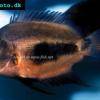 The
The  White
White  Twoband
Twoband  Fenestratus
Fenestratus  Window
Window  Tailbar
Tailbar  Black
Black  Redhead
Redhead 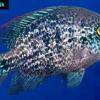 Oaxaca
Oaxaca  Xenotilapia
Xenotilapia